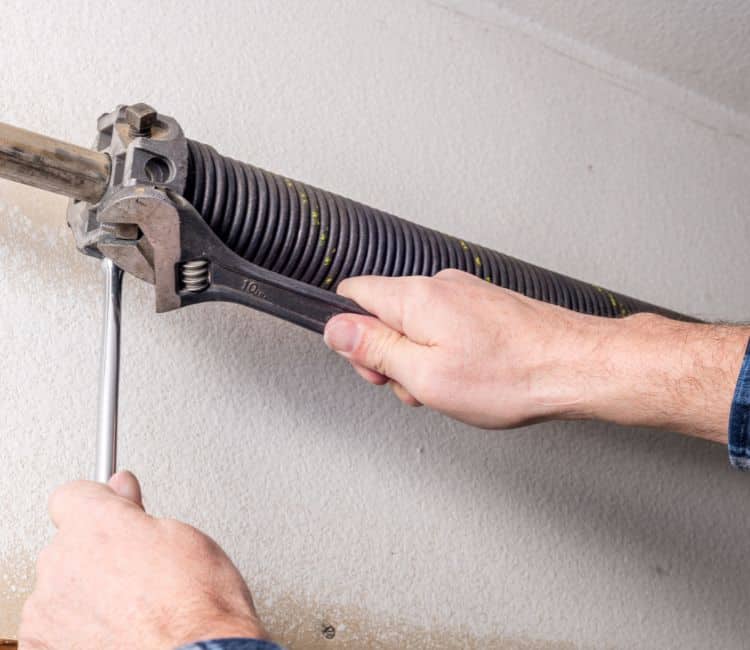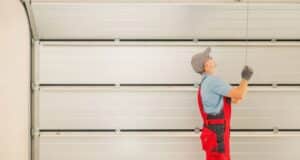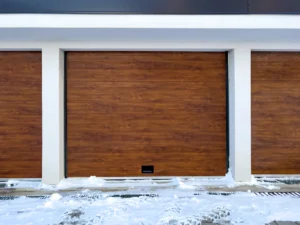Garage Door Springs Maintenance
garage Door spring types
There are two main types of garage door springs – torsion springs and extension springs. Torsion springs are located above the door, while the extension is located on either side of the door.
Torsion springs
Torsion springs provide the lifting power for heavy garage doors. These springs are wound around a metal shaft and tighten and loosen as the door moves up and down. Over time, the torsion spring can become loose and need to be adjusted. If a torsion spring breaks, it can be very dangerous, so it is essential to have them regularly checked by a professional.
Extension springs
Extension springs are on either side of the door, stretching and contracting as the door moves up and down. These springs are under a lot of tension and can be dangerous if they break. Extension springs should be regularly inspected for wear and tear and lubricated to prevent them from rusting.
What causes garage door springs to break?
Wear and Tear
One of the most common causes of garage door springs breaking is wear and tear. Over time, the springs can become weak or loose, which can cause them to break and fall on the garage floor.
Improper Installation
Another common cause of garage door springs breaking is improper installation. If the springs are not installed correctly, they can become loose or damaged, which can cause them to break. It is vital to ensure that the springs are installed according to the manufacturer’s instructions to avoid this problem.
Excessive Weight
The weight of the garage door can also cause the springs to break. If the door is too heavy, it can strain the springs, causing them to break.
Temperature Changes
Temperature changes can also cause garage door springs to break. If the springs are exposed to extreme cold or heat, they can become brittle and break. Keeping the springs at a consistent temperature is essential to avoid this problem.
Rust
Another common cause of spring breakage is due to rust or corrosion. This can happen if the springs are exposed to moisture or are not adequately maintained. If you notice any rust or corrosion on your springs, it is essential to have them replaced as soon as possible to avoid further damage.
Improper Maintenance
One of the most common causes of garage door springs breaking is improper maintenance. If the springs are not regularly lubricated, they can become dry and brittle, which can cause them to break. It is essential to lubricate the springs according to the manufacturer’s instructions to avoid this problem.
There are several reasons garage door springs may break, but these are some of the most common. If you notice any of these problems with your springs, it is important to have them replaced as soon as possible to avoid further damage.
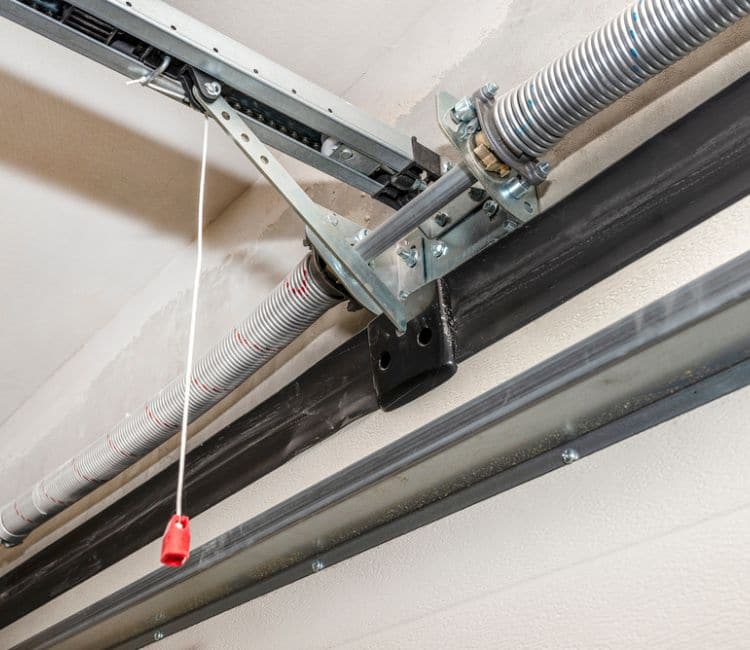
How to maintain garage door springs?
Maintaining your garage door springs can be challenging, but it’s worth the hassle. Springs wear out and need to have their lifespan improved or replaced after time passes by with proper maintenance.
Inspect them regularly:
You should check your springs every few months to ensure they’re in good shape. A quick way to do this is to open and close your door a few times. If you hear any creaking, grinding, or other strange noises, then it’s time for a closer inspection.
Visually inspect the springs for signs of wear. Look for any cracks, fraying, or other damage. If you see any of these things, it’s time to replace the spring. If your springs look good, you can move on to the next step: lubrication.
Use garage door lubricant:
It’s essential to keep your springs lubricated. The best way to do this is to use silicone spray garage door lubricants. You can find this at most hardware stores.
Apply lubricant to the springs, making sure to get both sides. Work it in well so that the springs are fully coated. Once done, open your door several times to work the lubricant into the springs.
If you’re not sure, it’s best for most springs to be lubricated at least once a year. Proper lubrication will prevent any unnecessary wear or damage over time and reduce costs in repairs down the line!
Replace them when needed:
If your garage door spring is damaged or worn out, it’s time to replace them. This job is best left to a professional, as it can be dangerous to work with garage springs. If you decide to replace them, buy the proper spring size and type for your door. You can usually find this information on the door or in the owner’s manual.
Once you have the new spring, follow the instructions that came with them to install them safely. If you’re unsure how to do this, it’s best to call a professional.
Maintaining your garage door springs is a great way to extend their life and keep them working properly for years, but you’ll still need to replace them at some point.
Signs that garage door's springs need to be replaced
The average garage door opens and closes about 1,800 times a year. That means that while your garage door may last decades, the other moving parts will need a replacement much sooner due to how often parts like the garage door opener or garage door’s springs wear out!
Here are some telltale signs that the spring system may need replacing:
Your doors are more complicated to open than usual:
If you have to put more muscle into opening your garage doors, or if they feel unusually heavy – it may be due to damaged springs.
Your doors aren’t opening as high as they used to:
If your doors used to open fully, and now they only go up part of the way – it’s likely due to broken springs.
There are gaps in the middle of your door:
When your springs are damaged, it can cause the panels in your door to separate slightly, creating a gap in the middle.
You see rust on the springs:
Rust is a sign of wear and tear, meaning that your springs are nearing the end of their lifespan. If you see rust, it’s time to start shopping for replacements.
You hear strange noises:
If you hear creaking, popping, or other strange noises from your garage door – it’s a sign that the springs are damaged and need to be replaced.
Your doors aren’t level:
Damaged springs can cause your doors to sit at an angle rather than level with the ground. This is an obvious sign that something is wrong and needs to be fixed.
If you notice these signs, it’s time to replace your garage door springs. Garage door springs typically have a lifespan of 10,000-20,000 cycles – so if you’re opening and closing your doors multiple times a day, they may only last a few years.
Replacing your garage door springs is a reasonably straightforward process, but it should be done by a professional.
When to call a professional garage door service?
While you can try to maintain your garage door spring yourself, it’s best to leave the job to the professionals. This is because working with garage door springs can be dangerous – if they’re not handled properly, they can snap and cause serious injury.
A professional garage door company will have the experience and knowledge to safely work with your springs and ensure they’re in good working order. They’ll also be able to advise you on when to replace them and what type of springs are best for your door.
If you think your garage door springs need to be replaced, then don’t hesitate to call a professional garage door company. They’ll be able to safely take care of the issue for you and ensure that your doors are in good working order.
Tips for maintaining your garage door springs:
- Check the balance of your garage door monthly. This can be done by disconnecting the automatic opener and manually opening and closing the door. If the door is not balanced, it can put unnecessary stress on the springs, leading to premature failure.
- Every few months, clean the springs with a mild detergent and rinse them with water. This will help to remove any dirt or debris that could be causing friction.
- Lubricate the springs at least once a year with a silicon-based lubricant. This will help to reduce friction and wear.
- Inspect the springs regularly for signs of wear, such as cracks or breaks. If you notice any damage, replace the spring immediately to avoid further damage to your garage door.
By following these tips, you can help to extend the life of your garage door spring and keep your door functioning properly for years to come.
Conclusion
Garage door springs are an essential part of your garage door, regular maintenance will keep your door working correctly.
If you notice any signs that your springs may be damaged, don’t hesitate to call a professional garage door repair service. They’ll be able to safely replace your springs and ensure that your garage door system is in good working order.

